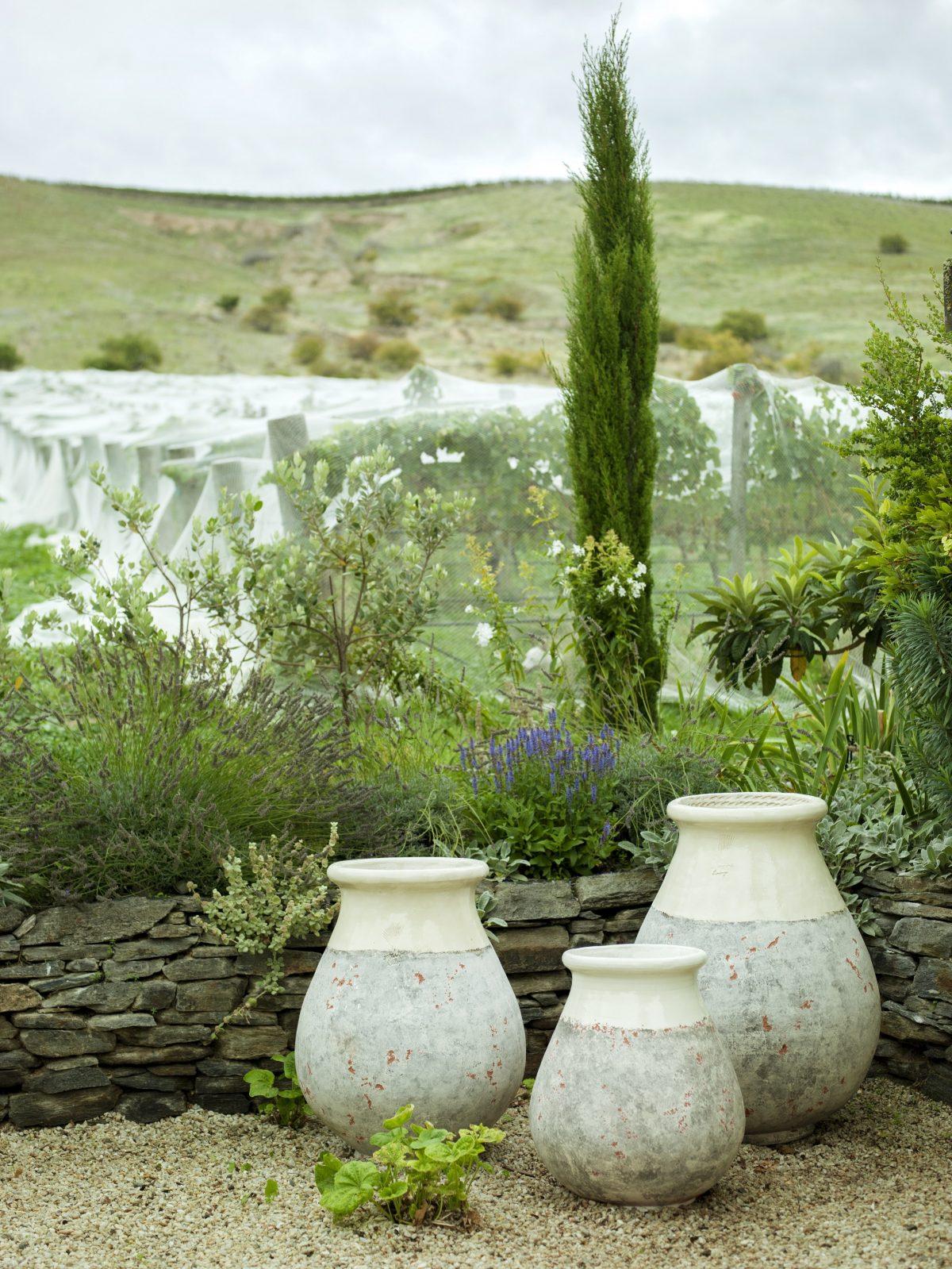The photographs show an almost quintessential French landscape, where a vast expanse of green grass disappears into a distant mountain range. In the foreground, rows and rows of grapevines are all neatly covered in an ocean of white netting. There are even olive trees and what appears to be a traditional French country house, its brown-gray stone softened by roses, lavender, and bay trees, some of which are in pots.

The traditional use for these Biot pots was to store grain. The teardrop design protects the grain from vermin. Rachael McKenna






